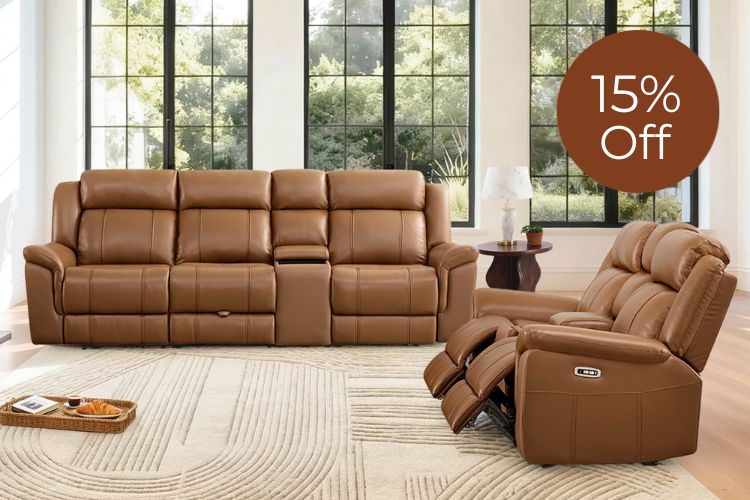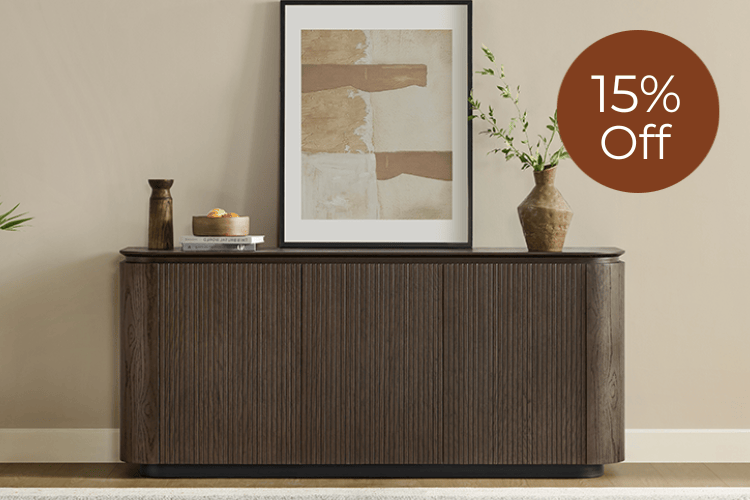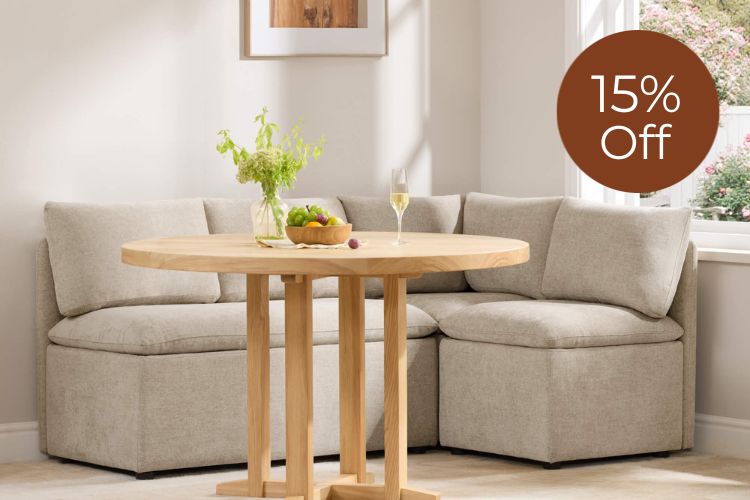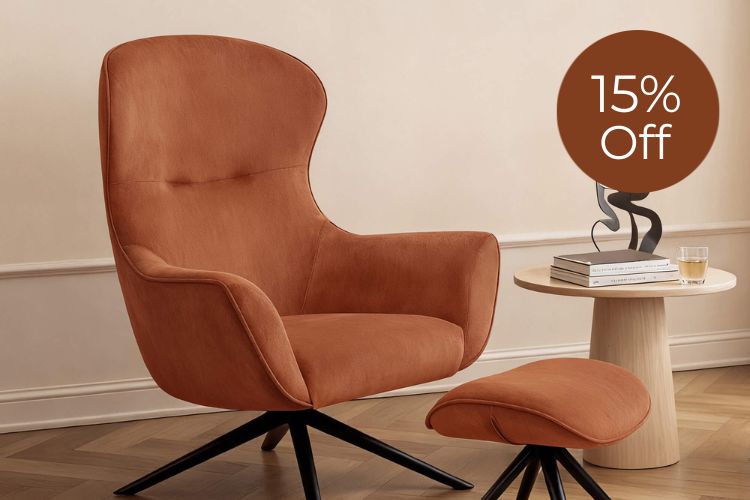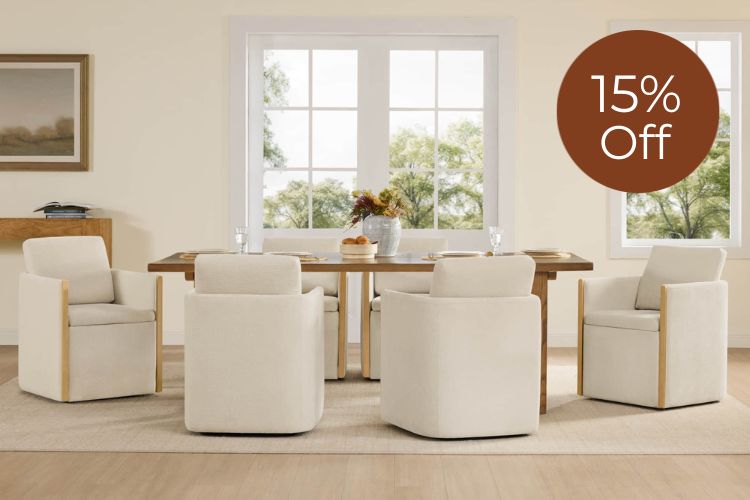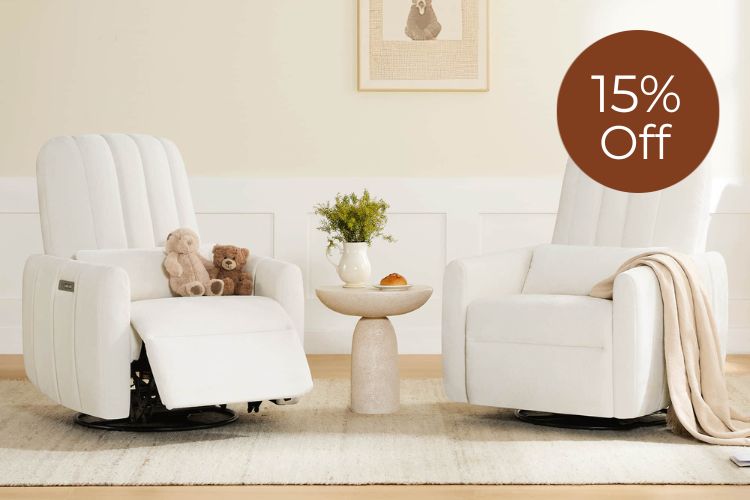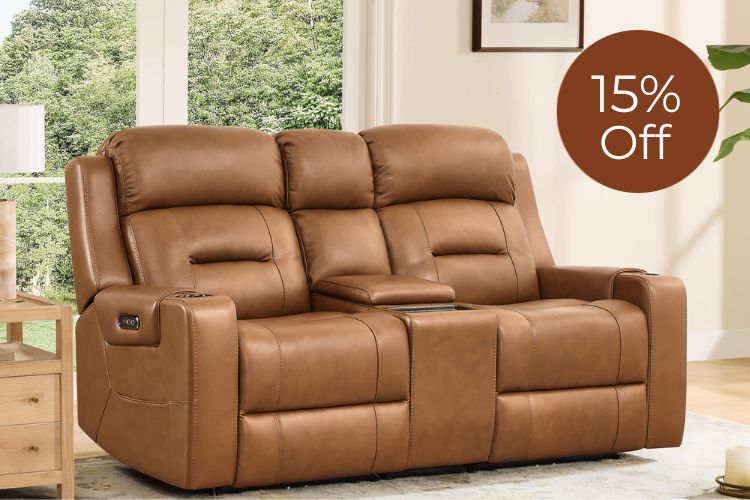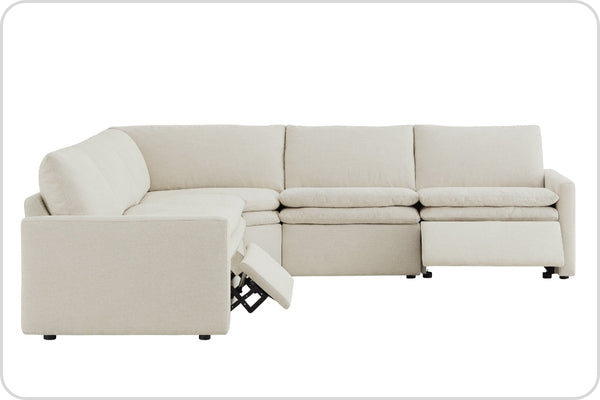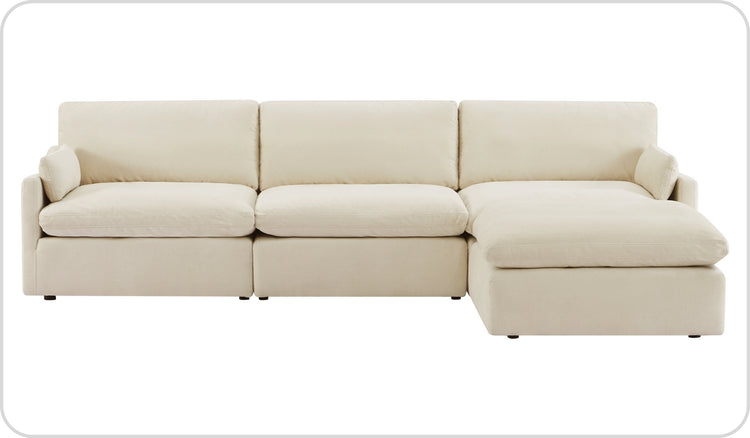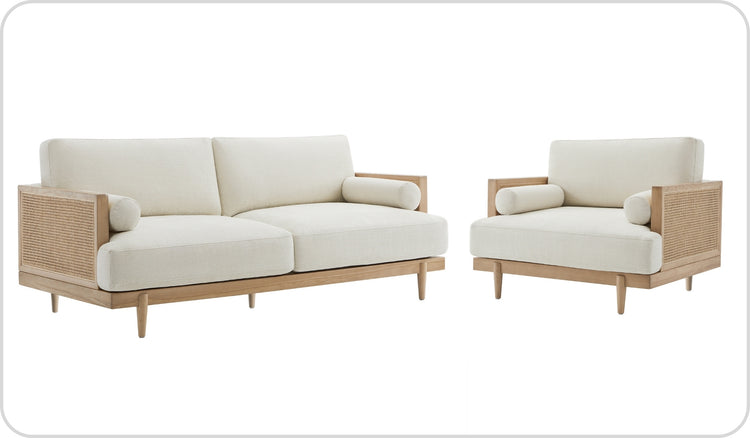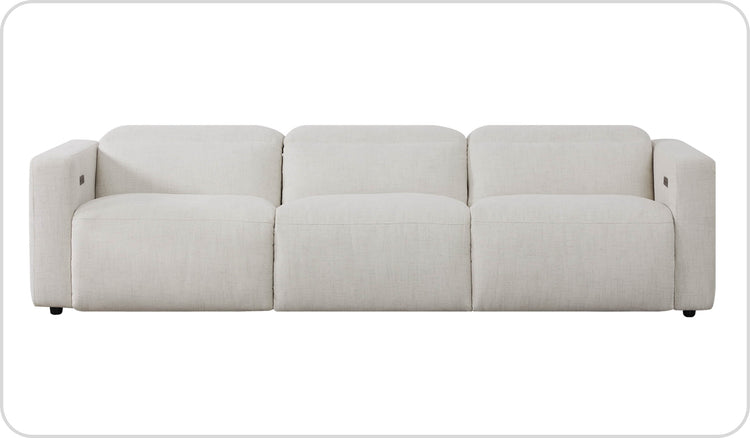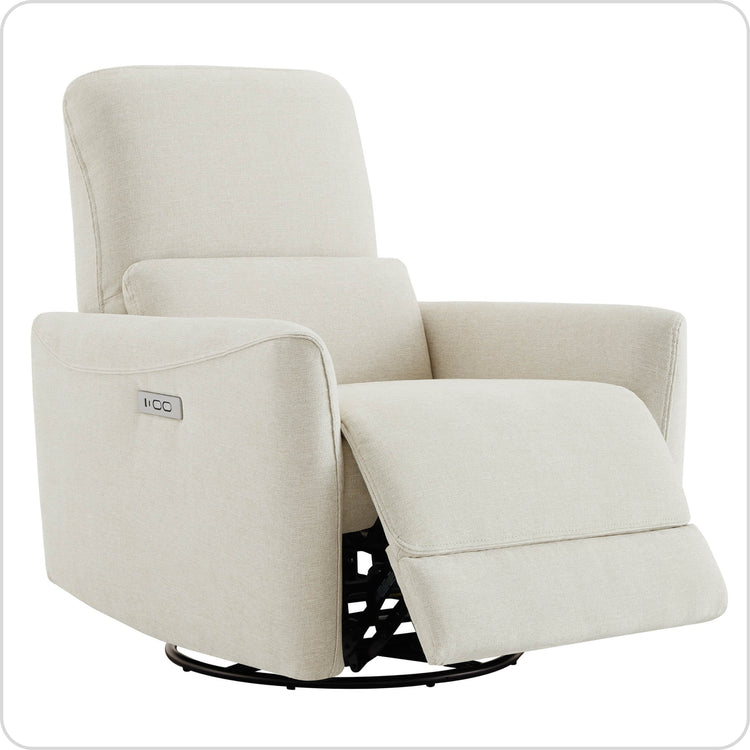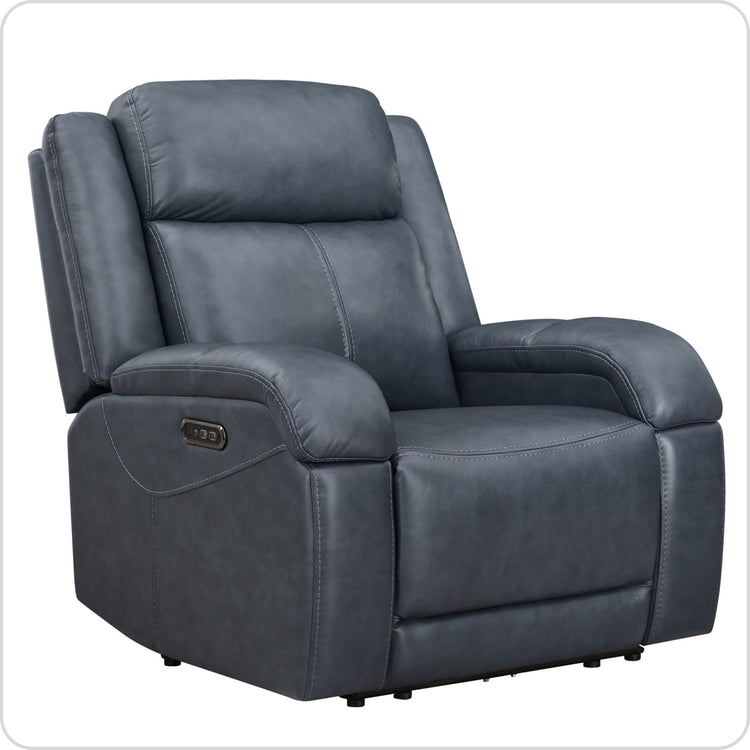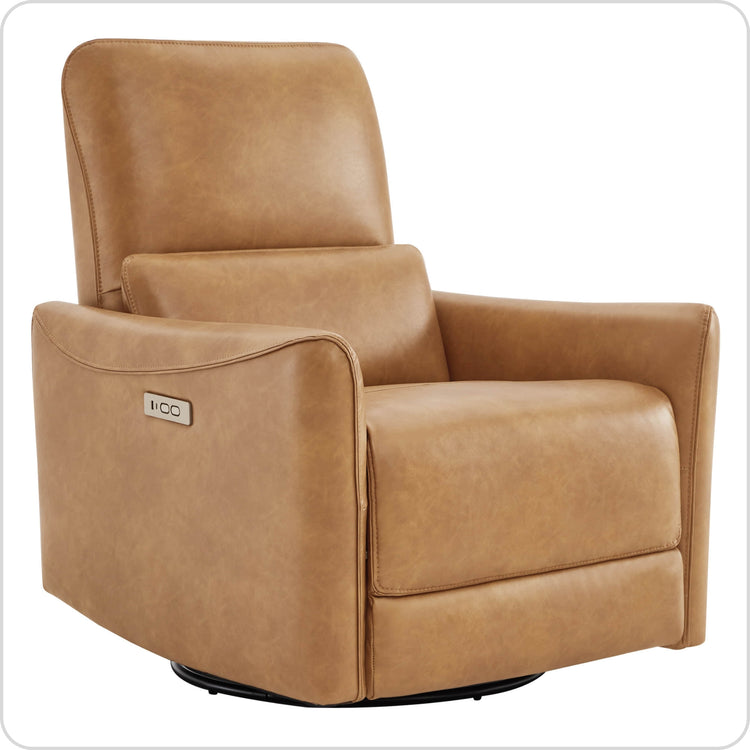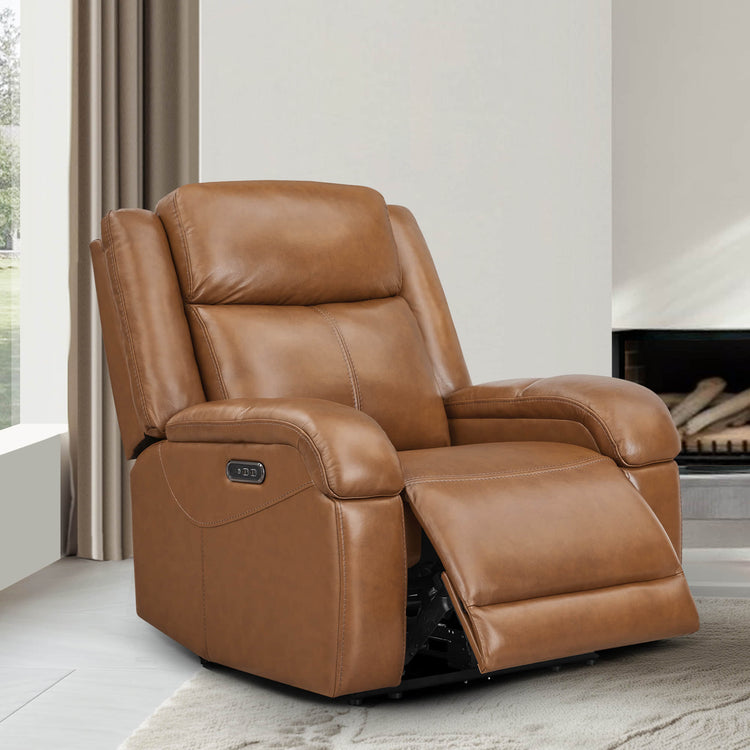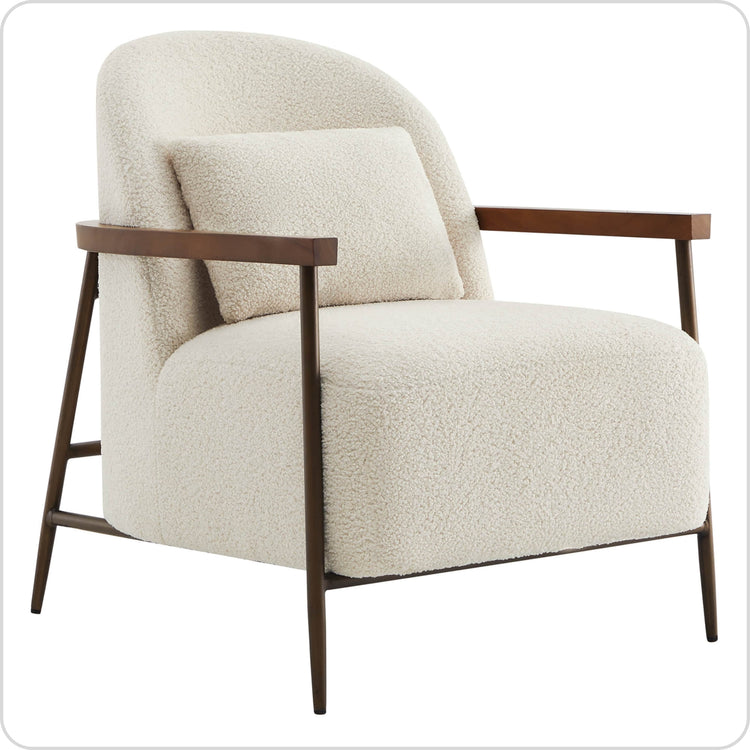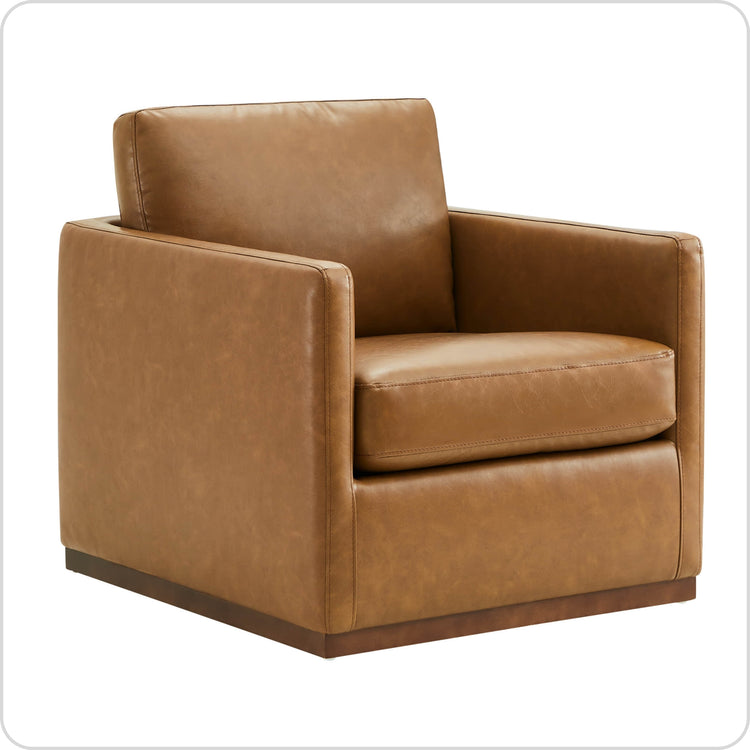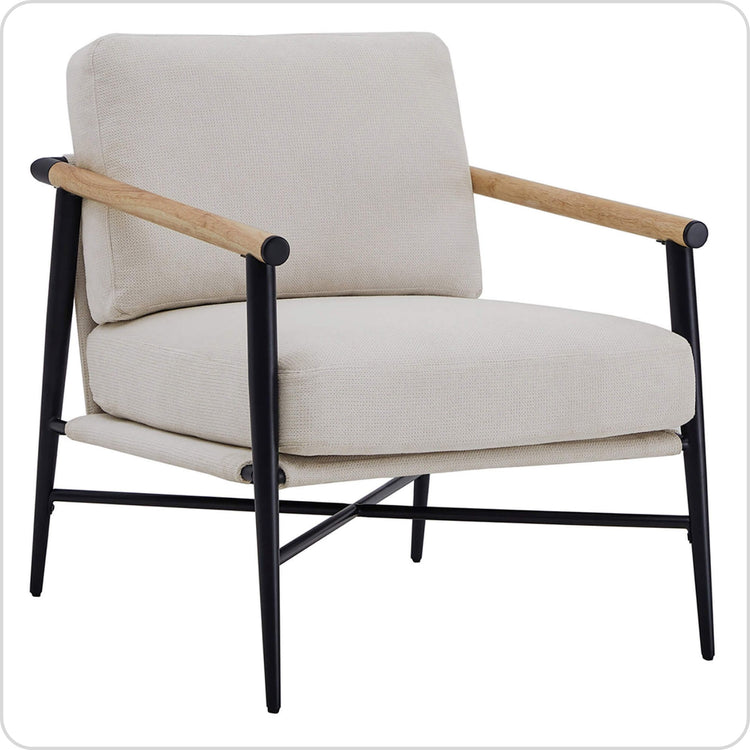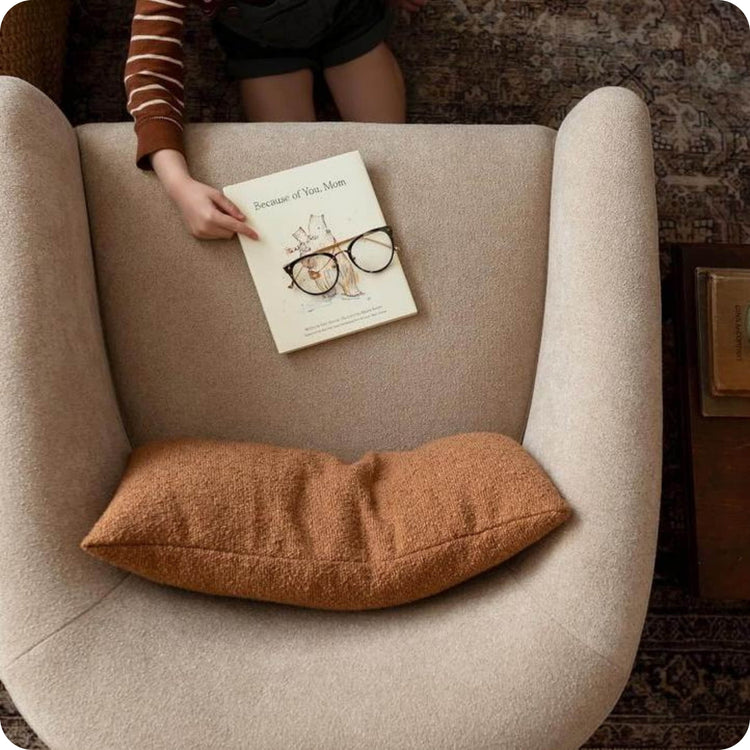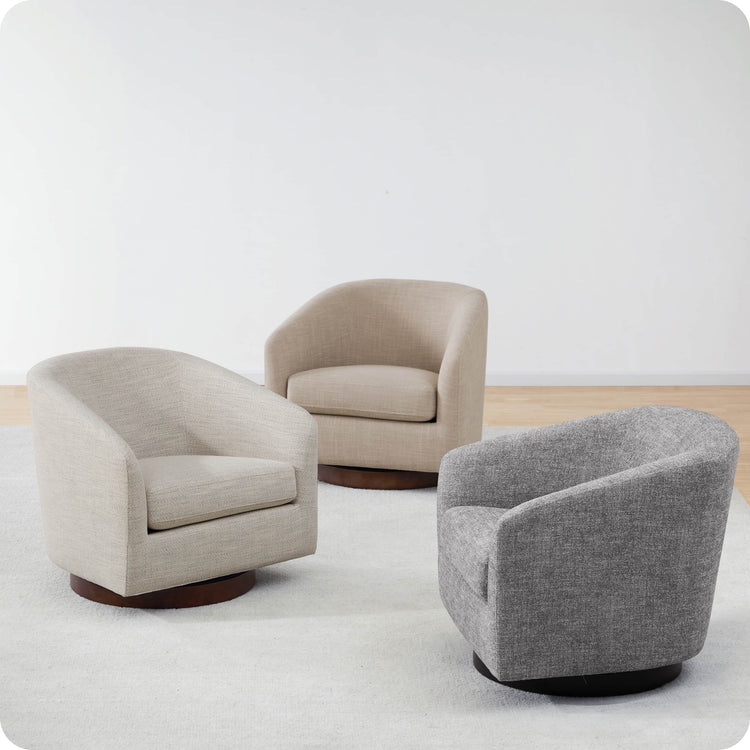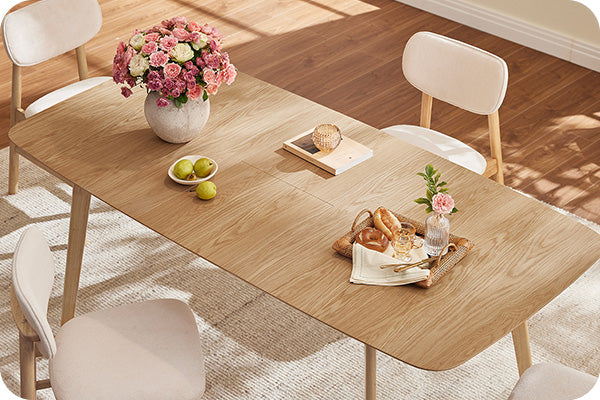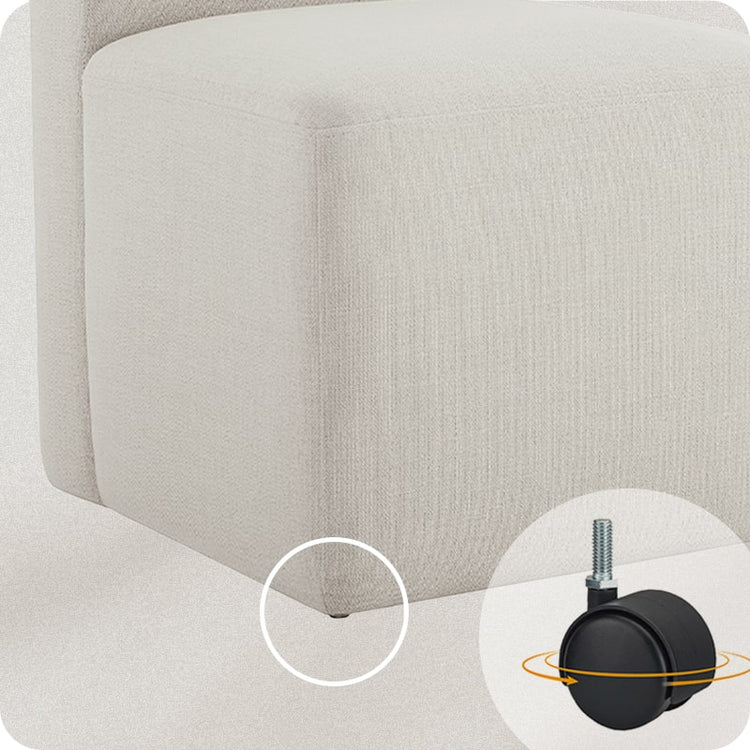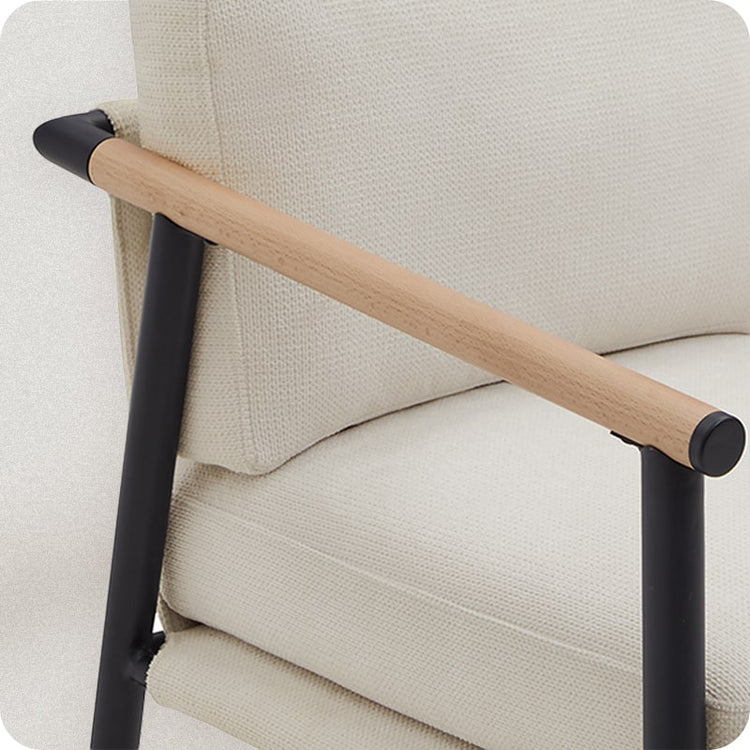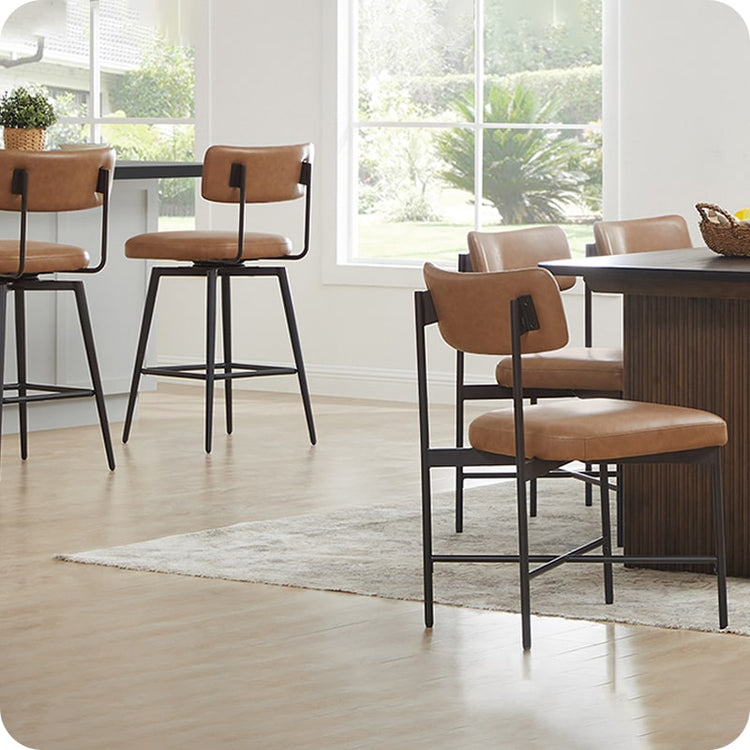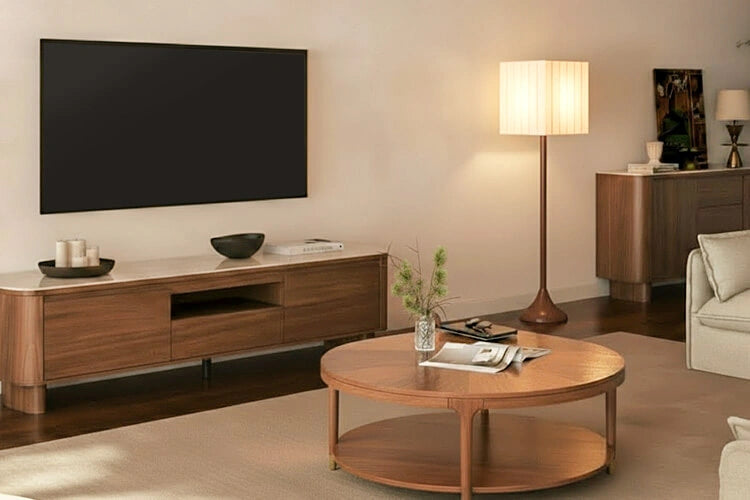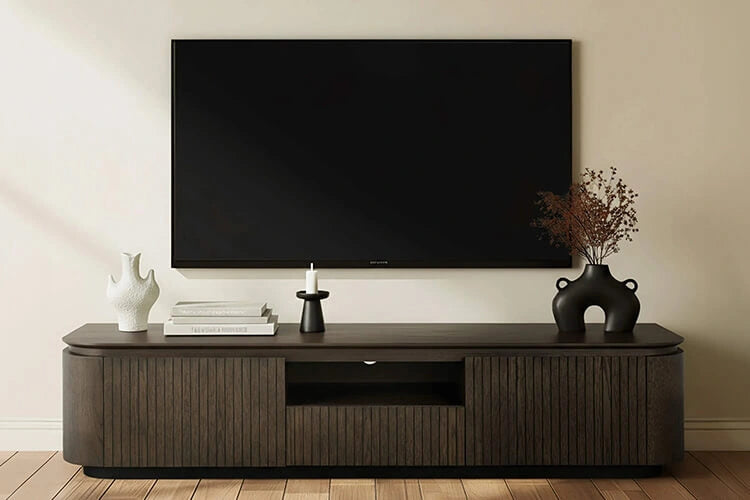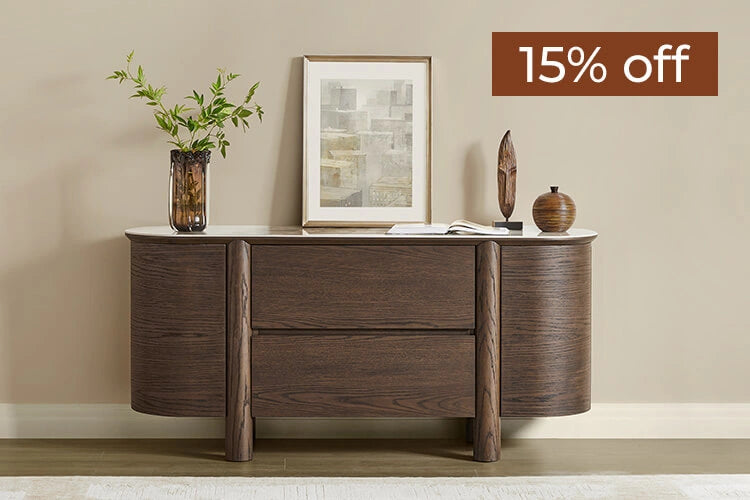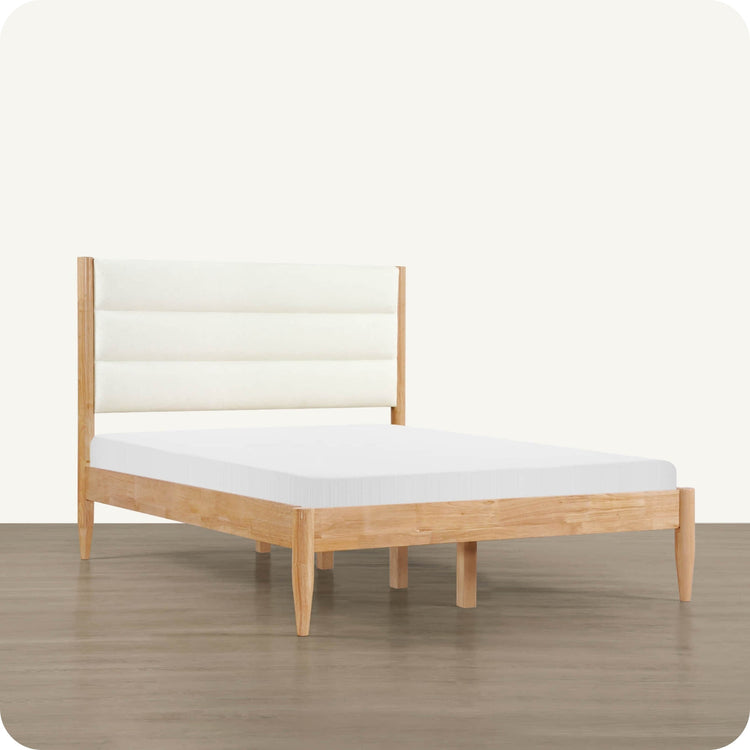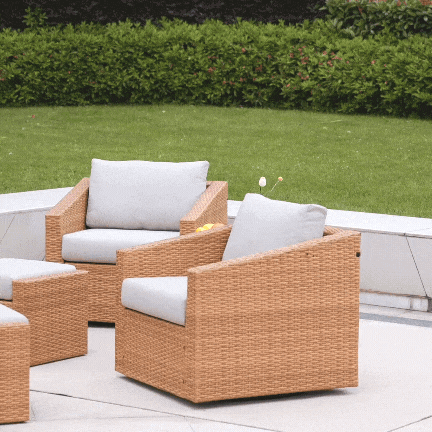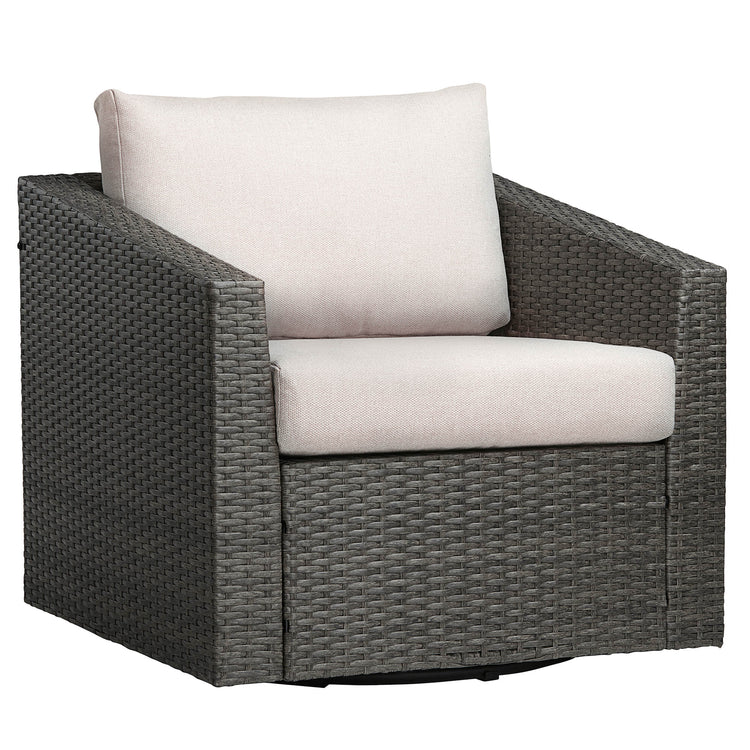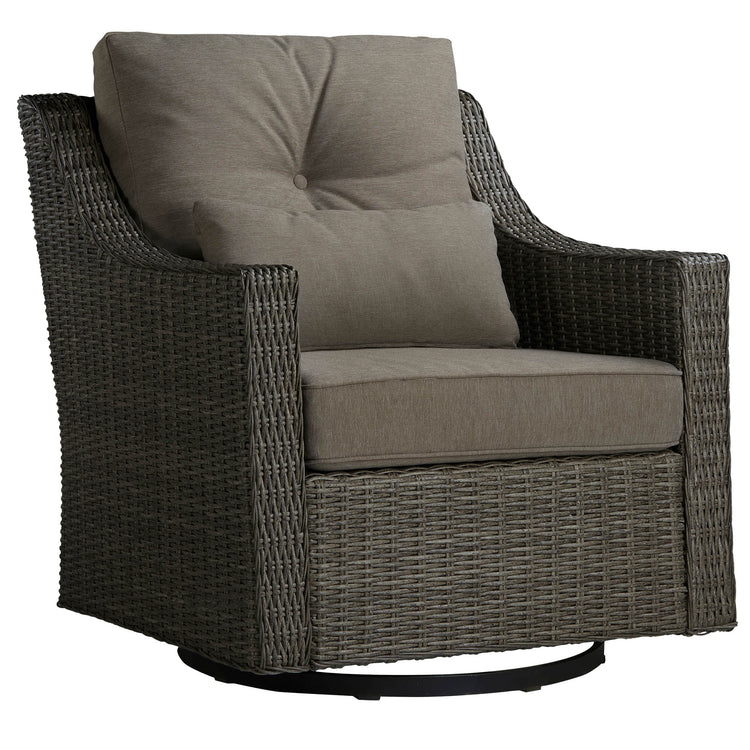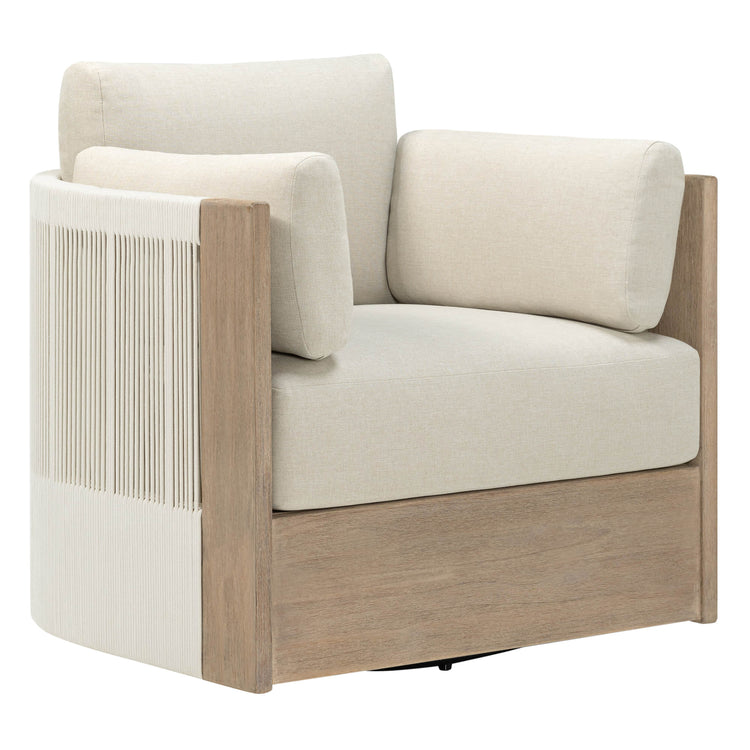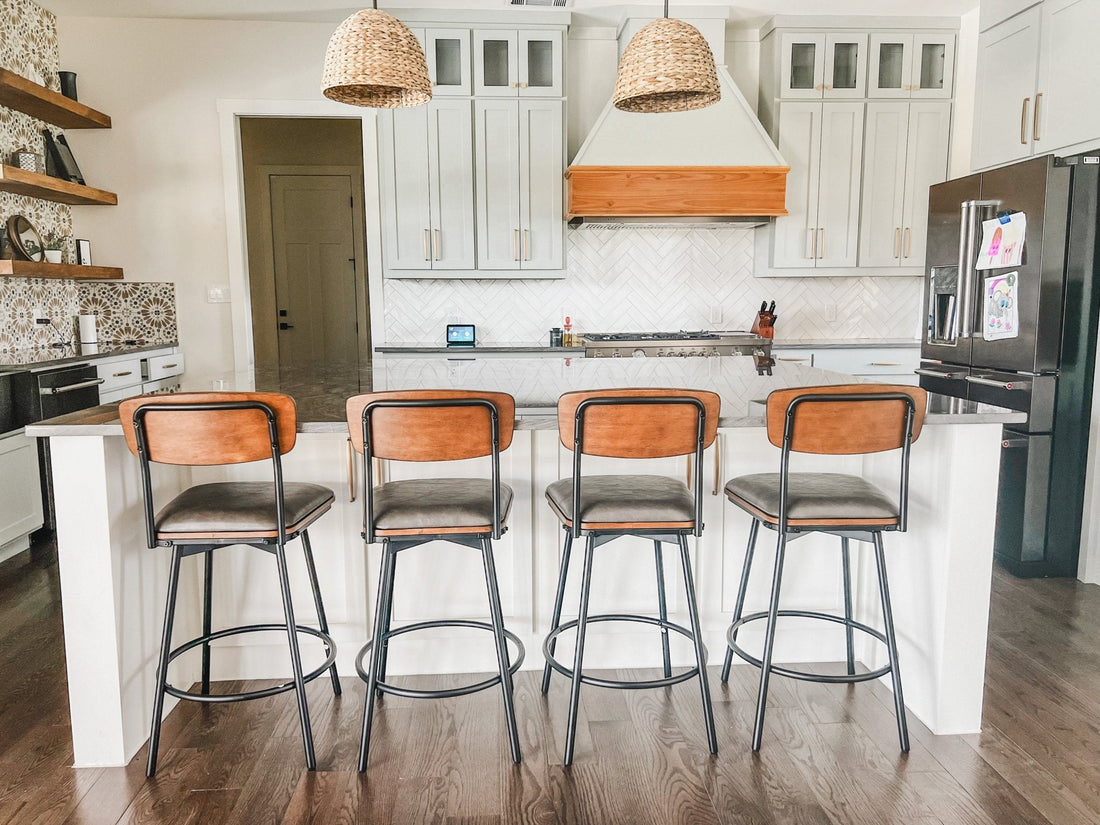Navigation
Introduction
Bar stools are having a major moment right now. With more people entertaining at home and spending time in open-concept kitchens, a set of bar stools makes for great additional seating. The popularity of home bars has also boosted bar stool sales, as people aim to recreate the pub or lounge experience at home.
When selecting bar stools, comfort and style should be your top considerations. This article will guide you through the key factors like height, seat style, materials, and design to help you find the perfect bar stools to suit your space.
Our Top Picks
Here are some of our recommendations:
Aislinn Swivel Barstool is a mixed-material design that provides a better sitting experience and enhances your comfort, making dining and socializing easier.

Eli Swivel Barstool from the mid-century period enhances kitchen design while providing seating for meal preparation and entertaining. Their traditional forms complement numerous design aesthetics.

Asher Swivel Bar Stool has the intentional placement and patterning of the silver fasteners is a defining detail that shapes the barstool's overall form and visual aesthetic. Each wooden base begins as carefully selected logs, ethically sourced from sustainable forestry providers.

Lissa Swivel Bar Stool is designed for unparalleled comfort, thanks to the specially engineered foam that pads the seat. This high-density foam is purposely thickened and heightened beyond standard dimensions to create an ultra-plush sitting experience.

Lovy Swivel Counter Stools, with its innovative 360-degree swivel design, it promotes seamless and strain-free conversation for anyone gathered around the kitchen island, allowing users to smoothly engage with each person.

Our Favorite Bar Stools
Swivel vs. Stationary
Swivel bar stools have a rotating seat that allows you to pivot left or right without picking up and moving the stool. That makes swivels more flexible and conversational for interacting with others. Stationary stools don't move, providing more stability but less mobility.
Backless vs. With Back Support
Backless bar stools have a simple, minimalist look that fits well in modern spaces. However, they lack lumbar and upper back support. Bar stools with backs provide much more comfort for extended sitting. Low back stools support the lumbar spine. Mid-back stools support the full-back. High-back stools offer neck and shoulder support as well.

Eli Swivel Counter Stool @cavieinteriors
Factors to Consider
Finding the perfect bar stools requires careful consideration of height, base style, materials, and budget. Regarding height, focus on your proportions and comfort rather than textbook measurements. Adjustable height stools provide flexibility for use at different counter heights.
Select a sturdy, stable base of quality materials like steel or solid wood to prevent wobbling and protect floors. Built-in footrests can add comfort and support.
Prioritize durability and easy maintenance with barstool upholstery. Opt for commercial-grade fabrics like leather or performance fabric that can withstand heavy use and cleanings.
Finally, factor in the budget by considering the frequency of use and long-term value. Higher quality stools justify a bigger investment for longevity versus replacements.
FAQ
1. How many bar stools do you need for a home bar?
The number of bar stools you need depends on the length of your home bar and how much seating you want to provide. Generally, allow 24-26 inches per stool for comfortable seating space. For a 6-foot bar, 3-4 bar stools are recommended. For an 8-10 foot bar, 4-5 bar stools are ideal for seating multiple guests.

Nova Swivel Counter Stool @cosmickology
2. What size/height is best for kitchen counters?
A standard counter height of 24-26 inches is recommended for kitchen islands or eating counters. That allows enough knee clearance below the counter when seated while keeping everything within comfortable reach.
3. Should you get a bar stool with arms?
Bar stools with armrests provide additional comfort and support for resting your arms but take up more space. Armrests add between 3-5 inches of width per stool. So consider the amount of clearance needed between the stools and next to the walls.
Conclusion
Selecting the perfect bar stools requires thoughtful evaluation of your unique space, personal aesthetic, and comfort priorities. Start by meticulously measuring the intended area and visualizing proper barstool dimensions and spacing. Personally test drive different bar stool options to properly assess quality, proportions, and coziness if possible. Your comfort should take top billing over design alone.
Today's broad range of available bar stool styles, shapes, fabrics, and builds provides endless options to craft seating that blends stylish design with customized ergonomics. Armed with these fundamental tips, you can confidently hunt for barstools tailored to your one-of-a-kind space and tastes. Take time to find that ideal fit. Soon you'll be contented on bar stools that mirror your style while hosting guests in a personally curated entertainment space. Only settle once you discover bar stools that check every box from form to function. The perfect pair is out there waiting for you.
Read More
- Industrial Chic: Incorporating Metal Barstools into Your Decor – CHITA LIVING
- Bar Stools vs Counter Stools: What's the Difference and Which One Do Y – CHITA LIVING
- Upgrade Your Kitchen with the Right Bar Stools: Tips for Buying – CHITA LIVING
- Decoding Performance Fabrics – What are Performance Fabrics? – CHITA LIVING
- 2023 Furniture Trends - Discover with Chita Living – CHITA LIVING
